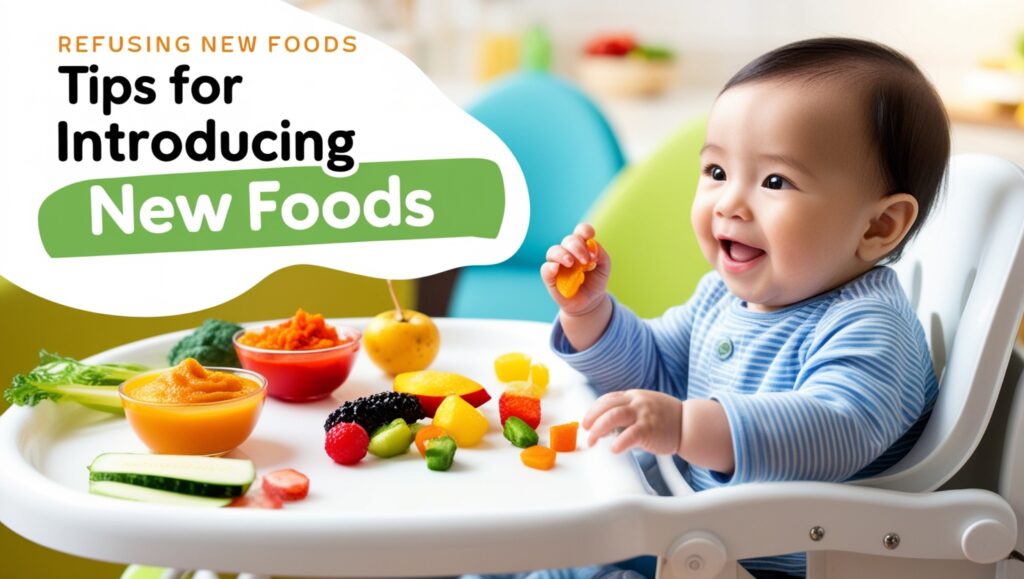Ensuring your baby gets a balanced diet is essential for their growth and development. From the first purees to toddler-friendly meals, providing the right combination of nutrients helps set the stage for a healthy, happy childhood.
In this article, we’ll discuss what balanced nutrition means for babies, the key food groups to focus on, and easy ways to make mealtimes both nutritious and enjoyable.
The Importance of Balanced Nutrition for Babies
Babies grow rapidly, and their nutritional needs are unique. A balanced diet:
- Promotes brain development with healthy fats and essential nutrients.
- Builds strong bones and teeth with calcium and vitamin D.
- Supports a healthy immune system with a variety of vitamins and minerals.
- Encourages healthy eating habits from the start.
What Does Balanced Nutrition Look Like?
A balanced baby diet includes:
- Fruits and Vegetables: Packed with vitamins, minerals, and antioxidants. Aim for a variety of colors to provide a wide range of nutrients.
- Proteins: Essential for growth, proteins can come from sources like chicken, fish, lentils, beans, and eggs.
- Whole Grains: Provide energy and fiber. Options like oats, quinoa, and brown rice are excellent choices.
- Healthy Fats: Necessary for brain development. Avocados, olive oil, and flaxseed are great additions.
- Dairy or Alternatives: Yogurt, cheese, and fortified plant-based options provide calcium and vitamin D.
Age-Appropriate Nutrition Tips
4-6 Months: First Purees
Introduce single-ingredient purees such as sweet potatoes, carrots, or apples. These are gentle on the tummy and allow your baby to explore new tastes.
6-8 Months: Building Flavor
Combine fruits and vegetables like peas and pear or avocado and banana. Add soft proteins like lentils or tofu to their diet.
8-12 Months: Exploring Textures
Start offering mashed or chopped foods, such as scrambled eggs, shredded chicken, or soft-cooked vegetables.
1-3 Years: Toddler Meals
Focus on small, balanced meals that include all food groups. Mini veggie quesadillas, pasta with meat sauce, or fruit and yogurt parfaits make for tasty, nutritious options.
Simple Strategies for Balanced Meals
- Plan Ahead: Prepare meals in advance to save time and reduce stress.
- Offer Variety: Introduce different foods to expose your baby to a range of nutrients and flavors.
- Go Natural: Opt for whole, unprocessed foods whenever possible.
- Make It Fun: Use colorful foods and creative presentations to make meals exciting.
Recipe Highlight: Creamy Avocado and Banana Mash (4-6 Months)
Ingredients:
- 1/2 ripe avocado
- 1/2 ripe banana
Instructions:
- Scoop the avocado flesh and mash it in a bowl.
- Peel and mash the banana.
- Mix the two until smooth and creamy.
- Serve fresh to your baby.
Nutritional Benefits: Avocado provides healthy fats for brain development, while bananas offer potassium and natural sweetness.
Tips for Handling Picky Eaters
- Introduce Gradually: If your baby is hesitant, try mixing new foods with familiar ones.
- Stay Positive: Encourage your baby, and avoid pressuring them to eat.
- Be Consistent: Offer foods multiple times, as it may take several tries for your baby to accept a new flavor.
Balanced Nutrition: Setting the Foundation for a Healthy Future
By focusing on balanced nutrition, you’re helping your baby develop a taste for wholesome, nourishing foods. A varied and nutrient-rich diet will not only fuel their growth but also lay the groundwork for a lifetime of healthy eating habits.
Visit the Balanced Nutrition section at BabyFeasts.com for more recipes, tips, and insights to support your baby’s journey into solid foods.
Healthy starts begin with BabyFeasts – your go-to guide for baby recipes and balanced nutrition!

